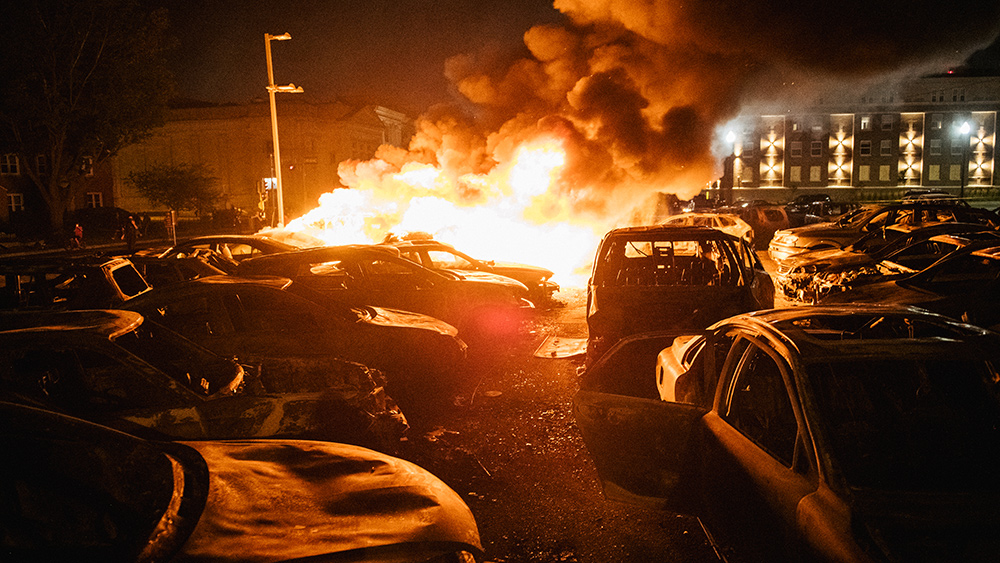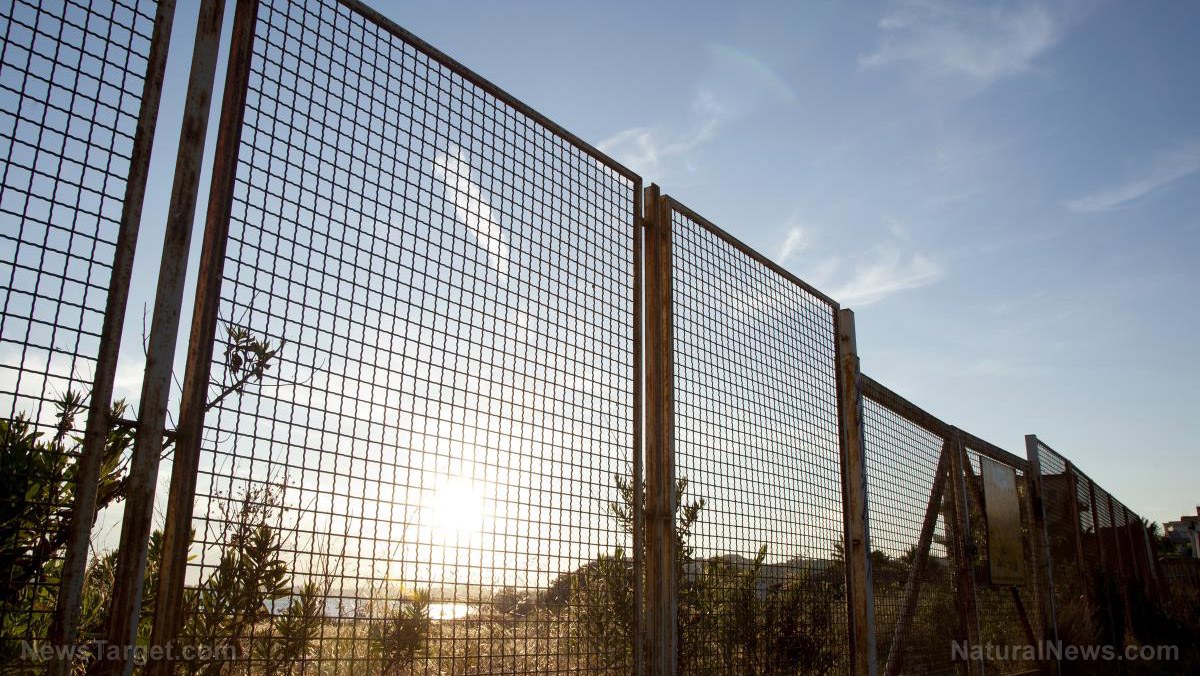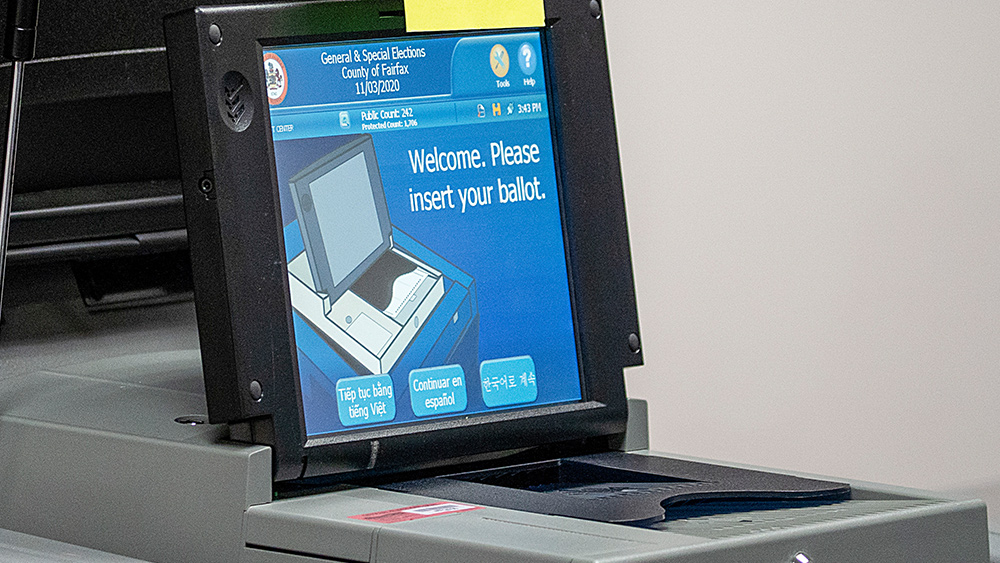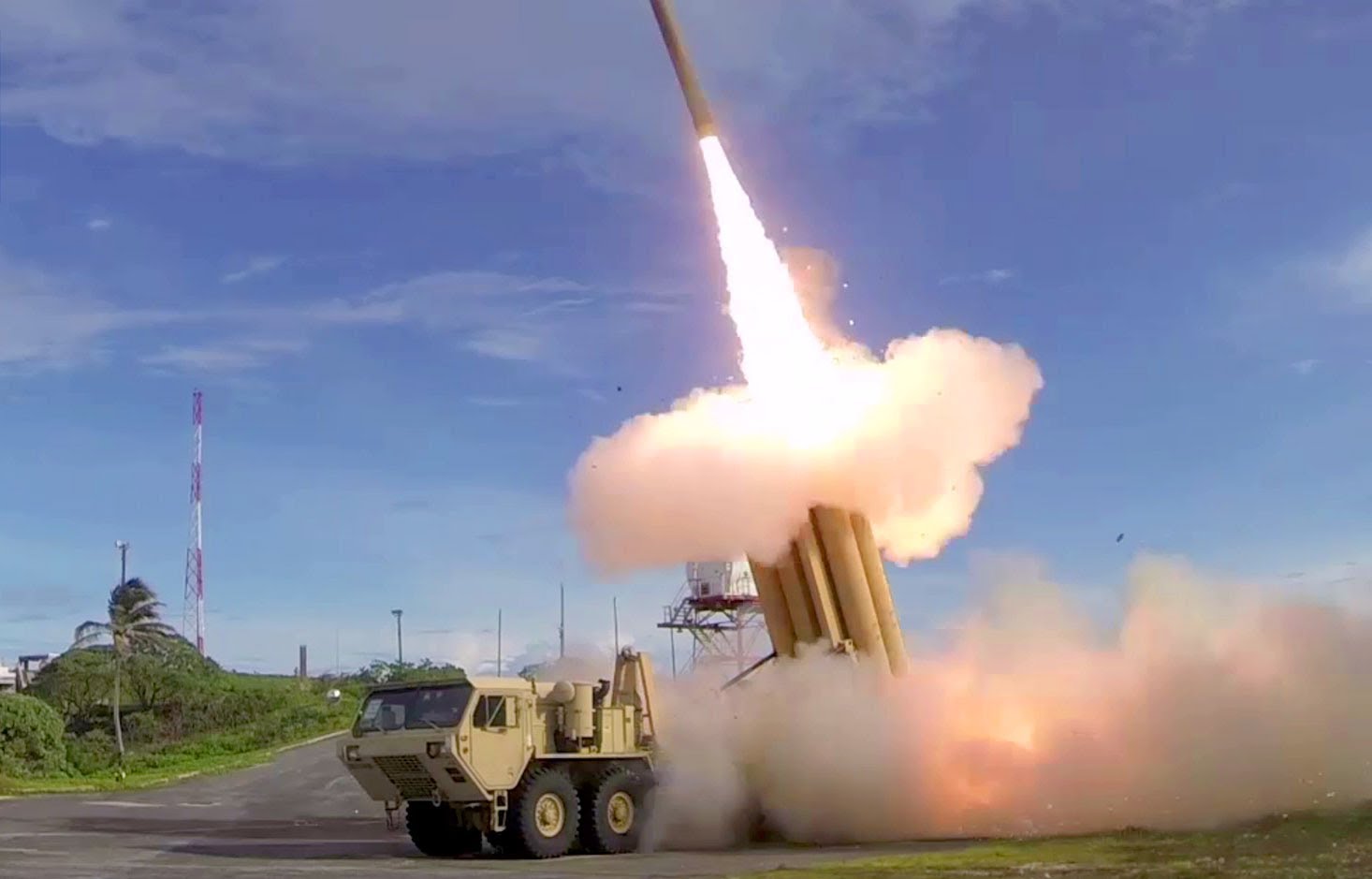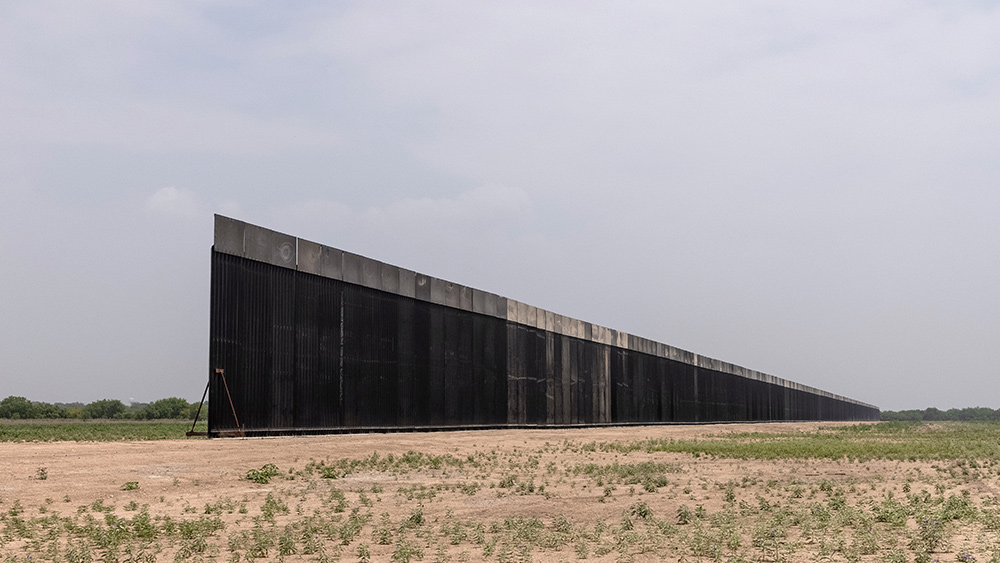I’m a twenty year truck driver, I will tell you why America’s “shipping crisis” will not end
11/02/2021 / By News Editors

I have a simple question for every ‘expert’ who thinks they understand the root causes of the shipping crisis:
(Article by Ryan Johnson republished from Medium.com)
Why is there only one crane for every 50–100 trucks at every port in America?
No ‘expert’ will answer this question.
I’m a Class A truck driver with experience in nearly every aspect of freight. My experience in the trucking industry of 20 years tells me that nothing is going to change in the shipping industry.
Let’s start with understanding some things about ports. Outside of dedicated port trucking companies, most trucking companies won’t touch shipping containers. There is a reason for that.
Think of going to the port as going to WalMart on Black Friday, but imagine only ONE cashier for thousands of customers. Think about the lines. Except at a port, there are at least THREE lines to get a container in or out. The first line is the ‘in’ gate, where hundreds of trucks daily have to pass through 5–10 available gates. The second line is waiting to pick up your container. The third line is for waiting to get out. For each of these lines the wait time is a minimum of an hour, and I’ve waited up to 8 hours in the first line just to get into the port. Some ports are worse than others, but excessive wait times are not uncommon. It’s a rare day when a driver gets in and out in under two hours. By ‘rare day’, I mean maybe a handful of times a year. Ports don’t even begin to have enough workers to keep the ports fluid, and it doesn’t matter where you are, coastal or inland port, union or non-union port, it’s the same everywhere.
Furthermore, I’m fortunate enough to be a Teamster — a union driver — an employee paid by the hour. Most port drivers are ‘independent contractors’, leased onto a carrier who is paying them by the load. Whether their load takes two hours, fourteen hours, or three days to complete, they get paid the same, and they have to pay 90% of their truck operating expenses (the carrier might pay the other 10%, but usually less.) The rates paid to non-union drivers for shipping container transport are usually extremely low. In a majority of cases, these drivers don’t come close to my union wages. They pay for all their own repairs and fuel, and all truck related expenses. I honestly don’t understand how many of them can even afford to show up for work. There’s no guarantee of ANY wage (not even minimum wage), and in many cases, these drivers make far below minimum wage. In some cases they work 70 hour weeks and still end up owing money to their carrier.
So when the coastal ports started getting clogged up last spring due to the impacts of COVID on business everywhere, drivers started refusing to show up. Congestion got so bad that instead of being able to do three loads a day, they could only do one. They took a 2/3 pay cut and most of these drivers were working 12 hours a day or more. While carriers were charging increased pandemic shipping rates, none of those rate increases went to the driver wages. Many drivers simply quit. However, while the pickup rate for containers severely decreased, they were still being offloaded from the boats. And it’s only gotten worse.
Earlier this summer, both BNSF and Union Pacific Railways shut down their container yards in the Chicago area for a week for inbound containers. These are some of the busiest ports in the country. They had miles upon miles of stack (container) trains waiting to get in to be unloaded. According to BNSF, containers were sitting in the port 1/3 longer than usual, and they simply ran out of space to put them until some of the ones already on the ground had been picked up. Though they did reopen the area ports, they are still over capacity. Stack trains are still sitting loaded, all over the country, waiting to get into a port to unload. And they have to be unloaded, there is a finite number of railcars. Equipment shortages are a large part of this problem.
One of these critical shortages is the container chassis.
A container chassis is the trailer the container sits on. Cranes will load these in port. Chassis are typically container company provided, as trucking companies generally don’t have their own chassis units. They are essential for container trucking. While there are some privately owned chassis, there aren’t enough of those to begin to address the backlog of containers today, and now drivers are sitting around for hours, sometimes days, waiting for chassis.
The impact of the container crisis now hitting residencies in proximity to trucking companies. Containers are being pulled out of the port and dropped anywhere the drivers can find because the trucking company lots are full. Ports are desperate to get containers out so they can unload the new containers coming in by boat. When this happens there is no plan to deliver this freight yet, they are literally just making room for the next ship at the port. This won’t last long, as this just compounds the shortage of chassis. Ports will eventually find themselves unable to move containers out of the port until sitting containers are delivered, emptied, returned, or taken to a storage lot (either loaded or empty) and taken off the chassis there so the chassis can be put back into use. The priority is not delivery, the priority is just to clear the port enough to unload the next boat.
What happens when a container does get to a warehouse?
A large portion of international containers must be hand unloaded because the products are not on pallets. It takes a working crew a considerable amount of time to do this, and warehouse work is usually low wage. A lot of it is actually only temp staffed. Many full time warehouse workers got laid off when the pandemic started, and didn’t come back. So warehouses, like everybody else, are chronically short staffed.
When the port trucker gets to the warehouse, they have to wait for a door (you’ve probably seen warehouse buildings with a bank of roll-up doors for trucks on one side of the building.) The warehouses are behind schedule, sometimes by weeks. After maybe a 2 hour wait, the driver gets a door and drops the container — but now often has to pick up an empty, and goes back to the port to wait in line all over again to drop off the empty.
At the warehouse, the delivered freight is unloaded, and it is usually separated and bound to pallets, then shipped out in much smaller quantities to final destination. A container that had a couple dozen pallets of goods on it will go out on multiple trailers to multiple different destinations a few pallets at a time.
From personal experience, what used to take me 20–30 minutes to pick up at a warehouse can now take three to four hours. This slowdown is warehouse management related: very few warehouses are open 24 hours, and even if they are, many are so short staffed it doesn’t make much difference, they are so far behind schedule. It means that as a freight driver, I cannot pick up as much freight in a day as I used to, and since I can’t get as much freight on my truck, the whole supply chain is backed up. Freight simply isn’t moving.
It’s important to understand what the cost implications are for consumers with this lack of supply in the supply chain. It’s pure supply and demand economics. Consider volume shipping customers who primarily use ‘general freight’, which is the lowest cost shipping and typically travels in a ‘space available’ fashion. They have usually been able to get their freight moved from origination to delivery within two weeks. Think about how you get your packages from Amazon. Even without paying for Prime, you usually get your stuff in a week. The majority of freight travels at this low cost, ‘no guarantee of delivery date’ way, and for the most part it’s been fine for both shippers and consumers. Those days are coming to an end.
People who want their deliveries in a reasonable time are going to have to start paying premium rates. There will be levels of priority, and each increase in rate premium essentially jumps that freight ahead of all the freight with lower or no premium rates. Unless the lack of shipping infrastructure is resolved, things will back up in a cascading effect to the point where if your products are going general freight, you might wait a month or two for delivery. It’s already starting. If you use truck shipping in any way, you’ve no doubt started to see the delays. Think about what’s going to happen to holiday season shipping.
What is going to compel the shippers and carriers to invest in the needed infrastructure? The owners of these companies can theoretically not change anything and their business will still be at full capacity because of the backlog of containers. The backlog of containers doesn’t hurt them. It hurts anyone paying shipping costs — that is, manufacturers selling products and consumers buying products. But it doesn’t hurt the owners of the transportation business — in fact the laws of supply and demand mean that they are actually going to make more money through higher rates, without changing a thing. They don’t have to improve or add infrastructure (because it’s costly), and they don’t have to pay their workers more (warehouse workers, crane operators, truckers).
The ‘experts’ want to say we can do things like open the ports 24/7, and this problem will be over in a couple weeks. They are blowing smoke, and they know it. Getting a container out of the port, as slow and aggravating as it is, is really the easy part, if you can find a truck and chassis to haul it. But every truck driver in America can’t operate 24/7, even if the government suspends Hours Of Service Regulations (federal regulations determining how many hours a week we can work/drive), we still need to sleep sometime. There are also restrictions on which trucks can go into a port. They have to be approved, have RFID tags, port registered, and the drivers have to have at least a TWIC card (Transportation Worker Identification Credential from the federal Transportation Security Administration). Some ports have additional requirements. As I have already said, most trucking companies won’t touch shipping containers with a 100 foot pole. What we have is a system with a limited amount of trucks and qualified drivers, many of whom are already working 14 hours a day (legally, the maximum they can), and now the supposed fix is to have them work 24 hours a day, every day, and not stop until the backlog is cleared. It’s not going to happen. It is not physically possible. There is no “cavalry” coming. No trucking companies are going to pay to register their trucks to haul containers for something that is supposedly so “short term,” because these same companies can get higher rate loads outside the ports. There is no extra capacity to be had, and it makes NO difference anyway, because If you can’t get a container unloaded at a warehouse, having drivers work 24/7/365 solves nothing.
What it will truly take to fix this problem is to run EVERYTHING 24/7: ports (both coastal and domestic),trucks, and warehouses. We need tens of thousands more chassis, and a much greater capacity in trucking.
Before the pandemic, through the pandemic, and really for the whole history of the freight industry at all levels, owners make their money by having low labor costs — that is, low wages and bare minimum staffing. Many supply chain workers are paid minimum wages, no benefits, and there’s a high rate of turnover because the physical conditions can be brutal (there aren’t even bathrooms for truckers waiting hours at ports because the port owners won’t pay for them. The truckers aren’t port employees and port owners are only legally required to pay for bathroom facilities for their employees. This is a nationwide problem). For the whole supply chain to function efficiently every point has to be working at an equal capacity. Any point that fails bottlenecks the whole system. Right now, it’s ALL failing spectacularly TOGETHER, but fixing one piece won’t do anything. It ALL needs to be fixed, and at the same time.
Nobody is compelling the transportation industries to make the needed changes to their infrastructure. There are no laws compelling them to hire the needed workers, or pay them a living wage, or improve working conditions. And nobody is compelling them to buy more container chassis units, more cranes, or more storage space. This is for an industry that literally every business in the world is reliant on in some way or another.
My prediction is that nothing is going to change and the shipping crisis is only going to get worse. Nobody in the supply chain wants to pay to solve the problem. They literally just won’t pay to solve the problem. At the point we are at now, things are so backed up that the backups THEMSELVES are causing container companies, ports, warehouses, and trucking companies to charge massive rate increases for doing literally NOTHING. Container companies have already decreased the maximum allowable times before containers have to be back to the port, and if the congestion is so bad that you can’t get the container back into the port when it is due, the container company can charge massive late fees. The ports themselves will start charging massive storage fees for not getting containers out on time — storage charges alone can run into thousands of dollars a day. Warehouses can charge massive premiums for their services, and so can trucking companies. Chronic understaffing has led to this problem, but it is allowing these same companies to charge ten times more for regular services. Since they’re not paying the workers any more than they did last year or five years ago, the whole industry sits back and cashes in on the mess it created. In fact, the more things are backed up, the more every point of the supply chain cashes in. There is literally NO incentive to change, even if it means consumers have to do holiday shopping in July and pay triple for shipping.
This is the new normal. All brought to you by the ‘experts’ running our supply chains.
Read more at: Medium.com
Submit a correction >>
Tagged Under:
big government, bubble, chaos, Collapse, corruption, COVID, crisis, economy, labor shortage, market crash, national security, pandemic, products, risk, shipments, shipping, supply chain, truth
This article may contain statements that reflect the opinion of the author
RECENT NEWS & ARTICLES
COPYRIGHT © 2017 NATIONAL SECURITY NEWS




